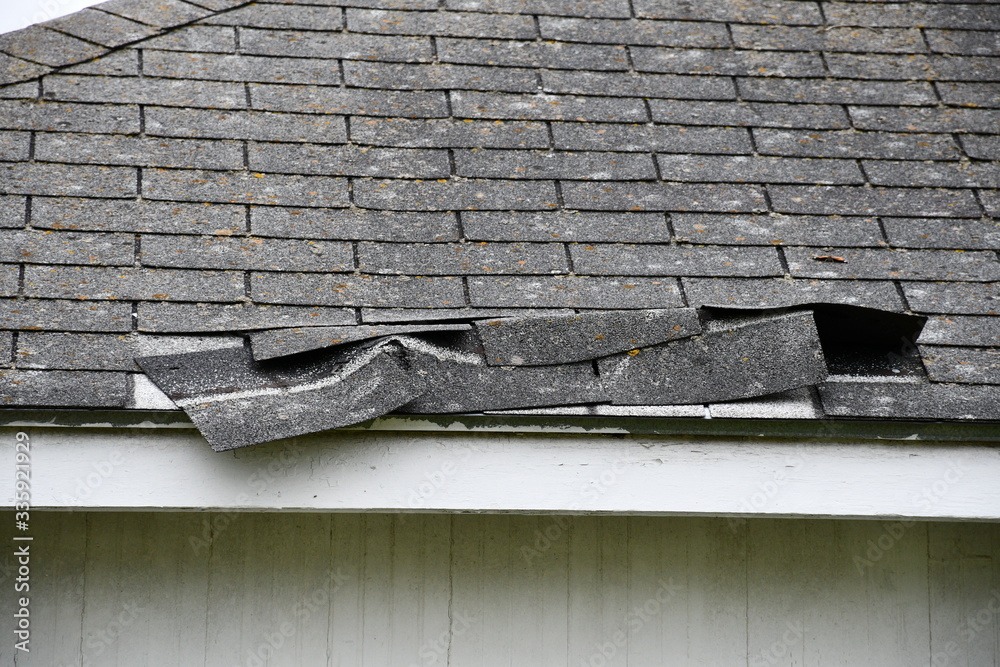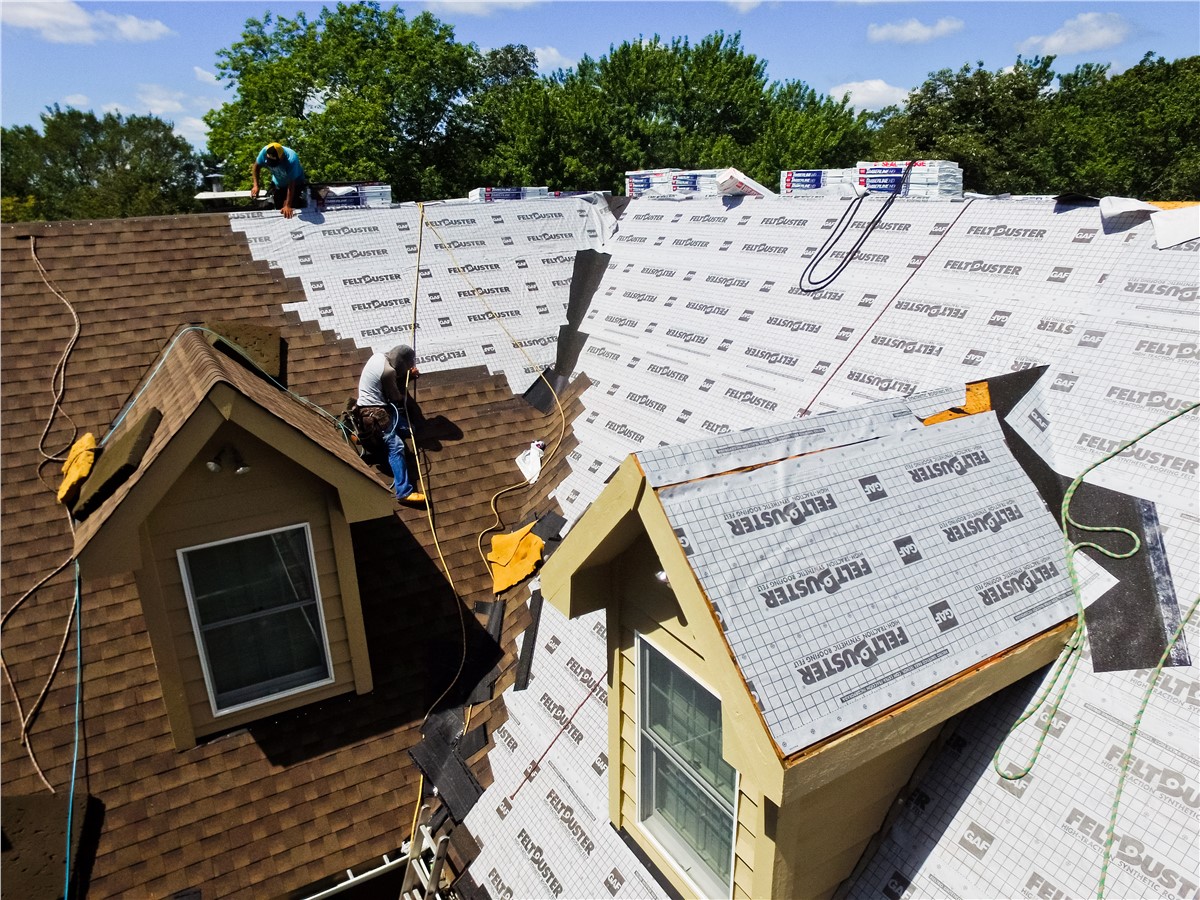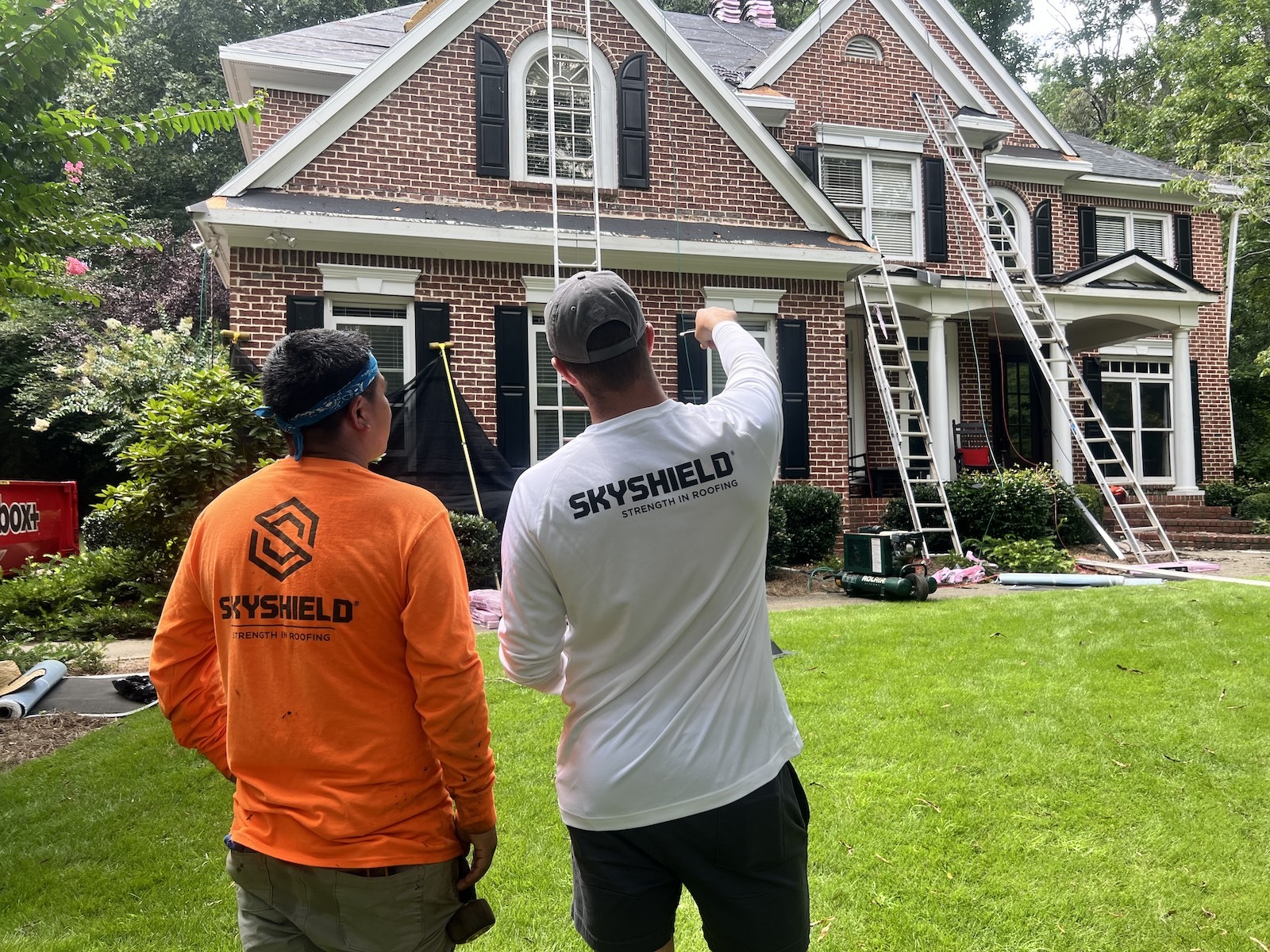
Roof Damage Insurance Claim
Filing a Homeowners Insurance Claim for Roof Damage: What Your Insurance Isn’t Telling You About Roof Coverage Do you have a damaged roof? When it comes to residential roofs, often there are only two solutions to fixing damage: repair, or replacement. When that happens, it’s probably a good time… Read More
Filing a Homeowners Insurance Claim for Roof Damage: What Your Insurance Isn’t Telling You About Roof Coverage
Do you have a damaged roof? When it comes to residential roofs, often there are only two solutions to fixing damage: repair, or replacement. When that happens, it’s probably a good time to dive into your homeowner’s insurance policy and learn how filing a homeowner’s insurance claim for roof damage works. While that sounds complicated, it doesn’t have to be. In this blog, we’ll take you step-by-step through the process of making sure your damage is taken care of.
First things first: Figure out if filing a claim is beneficial for you.
Here are a few questions to ask yourself and start the roof damage insurance claim process:
-
Are you someone who has experienced a recent storm?
-
Are roofers knocking on your door offering to give you a free roof inspection?
-
Are you looking into doing repairs, or even a complete roof replacement paid for by your insurance company?
-
Are your neighbors getting their roofs replaced?
If the previous questions apply to you, then you are not alone. At A+ Exteriors, we have a lot of experience with roof restorations, and we know exactly how to identify the damage to your property and help you file a roof damage insurance claim. Let’s walk through the steps and break down the details you need to know.
Assess Your Roof.
If you have recently experienced heavy rain, strong winds, hail, or have been hit with a storm, high winds, torrential rain, or some other weather catastrophe, now is the perfect time to look for any debris around your house.
By using a tool like Hail Trace, your insurance company knows when these storms have impacted your zip code, are notified when trees have fallen, and receive data on wind and hail stats. You can also use this tool to verify if high winds or hail have impacted your area, but your house will show signs as well. Look for missing shingles and granules in gutters and runoff — check with the neighbors, too. If you’re able to, take pictures of the damage and document it the best you can before you make any attempts to clean up or repair. When in doubt, make sure your notes and photographs are as detailed as possible, whether it’s you or a professional jotting them down.
When it comes to the damage to your roof, we know you don’t have the time, tools, or discerning eye to do the inspection safely. That’s why we recommend you leave this one to the experts. (Sorry, DIY-ers!) Make sure you get in contact with the right people who can help you with your assessment.
Understand Your Homeowners Insurance Coverage.
Before you file a claim, you need to understand which coverages you have signed up for with your carrier. Not all policies are the same, and not all insurance companies write the same policies. That’s why it’s important to know how you’re covered and whether you have a Replacement Cost Value (RCV) policy, an Actual Cash Value (ACV) policy, or a payment schedule policy. Pro tip: If you do not know this information, we recommend that you call your agent and ask for the declarations page.
Need a refresh on what these policies entail? Here are a few examples to illustrate each policy, so you have a better understanding of where you stand when you consider filing a roof damage insurance claim.
Replacement Cost Value (RCV): This coverage pays for the replacement cost of your property without subtracting depreciation.
Example: Your current roof was installed in 2010, and you filed an insurance claim for storm damage to your roof in 2020. The insurance carrier agrees that the damage is sufficient to require the roof to be replaced. At this point, the insurance carrier will generate an estimate using current and local data to determine the cost to replace your entire roof. If you have RCV coverage they will pay for the entire cost of the new roof, minus your deductible. Meaning, if it costs $10,000 to replace your roof and you have a $1,000 deductible, they will give you $9,000 and you will be responsible for paying the contractor of choice $1,000 out of pocket to amount to $10,000 for the replacement of your roof.
Actual Cash Value (ACV): This coverage pays for the replacement cost of your property minus depreciation. Policies like this are common with Allstate, Travelers, Liberty Mutual, Auto-Owners, and a few other carriers.
Example: Your current roof was installed in 2010, and you filed an insurance claim for storm damage to your roof in 2020. The insurance carrier agrees that the damage is sufficient to require the roof to be replaced. At this point, the insurance carrier will generate an estimate using current and local data to determine the cost to replace your entire roof. If you have ACV coverage, they will pay for the value of your current roof. Meaning, they will be paying the cost of your depreciated roof. This works similarly to an auto policy. If it costs $10,000 to replace your roof but it has depreciated due to age and wear, and the roof is only worth $4,000, and you have a $1,000 deductible, they will give you $3,000, and you will be responsible for paying the contractor of choice $7,000 out of pocket to amount to $10,000 for the replacement of your roof.
Payment Schedule Policy: This policy works similarly to an ACV policy. The amount that the insurer agrees to pay to return your property to pre-storm conditions is depreciated by a certain percent every year. They do not call this “depreciation,” but the formula is similar. Insurance carriers have begun to write payment schedule policies more and more as homeowners were becoming aware of what an ACV policy was.
To file a claim for storm damage to your roof, it’s essential to know what type of coverage you have before you make a decision. If you’re working with a 10-year-old roof and only have an ACV or payment schedule policy, it could end up costing you more than you can afford to replace your roof.
If you feel like this situation may apply to you, we’d like to help, even before you speak with an insurance representative. Reach out to A+ Exteriors today with any questions you have about damage to your roof, and we can help you have the upper hand when you start filing a homeowner’s insurance claim for roof damage.
You might also like
-

Insurance
Big Questions: When Should You Hire an Appraiser?
Sometimes, the process of dealing with roof damage is straightforward. You recognize the damage. You file a claim with your insurance. Your insurance company assesses the damage. You get your roof fixed. Other times, that process is… well, not that simple! Sometimes, you need more help to… Read More
-

Roof Leaks
Dealing With Damage: Ten Questions to Consider About Roof Repairs, Insurance, and More!
When storm damage strikes your roof, you can depend on Skyshield to step in. As roofers in the Georgia area, we get questions from homeowners all the time about how to navigate damages, repairs, insurance, and more. As experts in the industry, we’re here to help! Take a look at… Read More
-

Roof Leaks
Common Roof Damage Issues In Georgia
Atlanta area homes experience a wide variety of weather throughout the year. This causes stress to the average roof in numerous ways. How often do you need to maintain your roof and why? We recommend that every homeowner does a roof inspection and maintenance check every 3 to 5 years. Read More